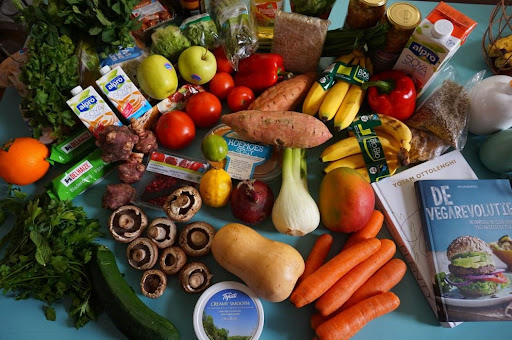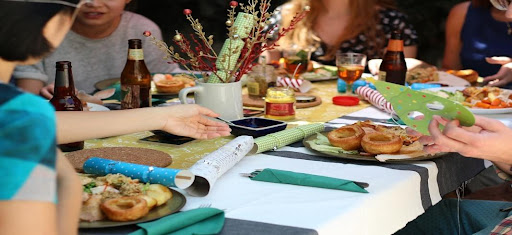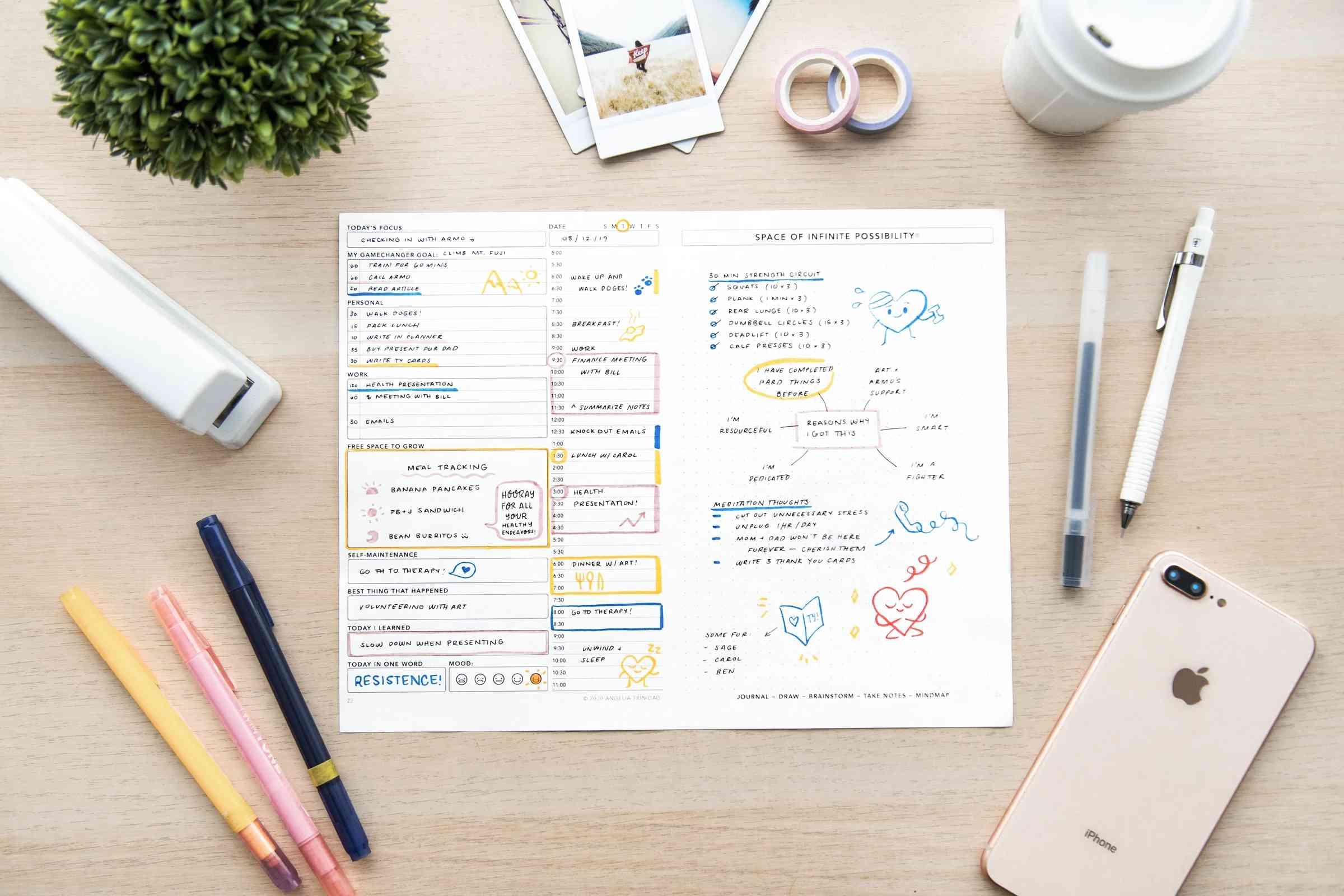Simple Home-Cooking Tips for College Students

Being a full-time student is challenging, with a full schedule and time management, the last thing most students worry about is food. With most college students leaving home for the first time, cooking might seem like a boring chore and obligation. But eating healthy home cooked meals are important, not just for your mind and body, but for your budget.
Home cooked meals seem impossible to those who have never cooked for themselves. I am a single mom, full-time student, and I volunteer in my free time. I find time and set scheduled nights to cook dinner. I couldn’t afford to eat out every night and I needed to eat nutritious meals. I started out with one pot, one skillet, a few utensils and knives. I didn’t have a microwave and was afraid of the oven. But over the years, I have gained tips and tricks to help make the kitchen experience fun, quick, and simple.
If you struggle with cooking and can’t afford to eat out anymore, here are some simple home-cooking tips for college students on how to get started.
Use Online Resources, Cookbooks, and Google
If you don’t know the temperature of something or how to do something, utilize your cell phone. Watch cooking videos in your free time and in between classes or homework assignments. You can watch food bloggers on YouTube, Pinterest, Instagram, and TikTok. This will get your mind familiar with how to use ingredients and what to do with them. About 12 years ago I started watching cooking shows, only because I found them entertaining. I slowly convinced myself that I could do that; they are showing me exactly what I need to do. I started with watching Rachel Ray and Chef Gordon Ramsey, who are now on YouTube. But America’s Test Kitchen was the most interesting. In the test kitchen, many Chefs test one recipe until it is perfected. Once the recipe is perfected, they show the best recipe on the show.
Keep Simple Ingredients

Raw, simple, and healthy
Ingredients like raw onions, raw garlic, lemons, carrots, celery have a long shelf life. Also having these ingredients will fit your budget and add nutritious flavor to your meals. Onions and garlic cloves add good nutrients, and the flavor they have are staples in all kitchens. Fresh lemons add a delicious citrus kick to recipes with chicken and fish. You can add lemons to water and tea for a healthy flavor. Also, you can make light dressings for salads to add a healthy option. You can eat carrots and celery raw, as a great healthy snack but also add them in soups or stir-fry. You can steam or roast carrots for a delicious and simple side in meals.
Avocados, apples, bananas, oranges are great on your budget. They can be placed on your counter or refrigerated to last a little longer. With avocados, they can be eaten alone, used to make guacamole to put on toast, with eggs, in salads, or on a sandwich. Avocados are a healthy fat, great for your brain, so when you need help studying, eat some avocados. Apples, bananas, and oranges are the most simple and nutritious snack you can get. They don’t break your budget and are available anywhere you get food.
Keep your cupboards full
Spices, canned protein, canned fruits, and veggies are sometimes life and time savers. These simple ingredients are not very expensive in the grocery store, but have a longer shelf-life. They can all be added into your meals, saving time and making cooking easy and delicious.
Canned proteins such as tuna and chicken seem daunting, but with the right ingredients you can spice your meal up great. Canned products are typically not expensive and the shelf-life is incredibly long. Even Chef Gordon Ramsay uses canned products!
Keeping things cool
Frozen proteins, fruits, veggies, healthy microwave meals, and of course ice cream are great things to have for quick and simple home-cooked meal planning. There are options of frozen quinoa, which is a great side dish that is nutritious and delicious. To save time you can buy frozen vegetables, just pop them in the microwave and serve, only taking 4-5 minutes to heat.
Once these ingredients become staples in your kitchen, it will be simple to replace them. When you run out of something, write it down, then the next time you need to go to the grocery store you will have a list of what you need to replace.
Make leftovers
Any time you know you have time to make a meal, make a bunch. Spaghetti or your favorite pasta dishes are easy and you can make a lot at one time. If you have too much, share it with your friends. People  love leftovers. Also, it is one less thing you have to worry about the next night, just reheat the leftovers for dinner. You can share your food as a gift to someone. It will make another college student’s day. It is a simple way to put a smile on someone’s face. Who doesn’t like pasta? It makes for a great home-cooked meal and very easy on your budget as well.
love leftovers. Also, it is one less thing you have to worry about the next night, just reheat the leftovers for dinner. You can share your food as a gift to someone. It will make another college student’s day. It is a simple way to put a smile on someone’s face. Who doesn’t like pasta? It makes for a great home-cooked meal and very easy on your budget as well.
Food Prep
When you get in the habit of cooking meals, food prepping is a great idea if you are on the go. You can store the small meal containers in your fridge and enjoy at your convenience.
- Prepping meals for the week is an easy way to eat healthy all week.
- Make a lot of food in one day, (it could take 3-4 hours). Make as many servings that you want.
- When prepping food, cooked proteins and veggies are good for about 7 days. You can make enough meals for a week.
- When you have no idea what to make for food prep, start simple and easy. Start with these three ingredients: Chicken, white rice, frozen mixed veggies.
- You can find many recipes online, and make it fun by doing it with friends.
Safety first
When cooking, there are simple life-saving rules that are non-negotiable. Using a knife, not starting fires, and cooking meat to the right temperature are examples. Using a dull knife seems best when inexperienced, but it is frustrating, time-consuming, and could potentially be dangerous. When cutting fruits and vegetables with hard exteriors, a dull knife couldn’t do the job, and by applying more pressure your knife would get stuck or potentially cause the item to roll the knife into your hand.
Here are some tips on how to use a sharp knife:
- If you don’t have a knife sharpener, using the bottom of a coffee mug works like a sharpening stone. Rub the sharp edge of the knife for 15 seconds on each side. This is a simple way to keep your knife sharp.
- Keep your knives in good shape, sharpening before or after you use it. But not every time, only when you notice it seems dull.
- Dry immediately after washing, preventing rust or hard water damage.
- Your knife should do the work. Your wrist shouldn’t hurt after using a knife. Guide your knife in the direction you want it to go, by applying little pressure with ease. You know your knife is doing the job by how little pressure you have to apply.
- When chopping or dicing food, it’s best to get in the habit of keeping your fingertips out of the way. With your fingertips down and slightly folded, let the knuckles nearest to your fingertips act like a shield. Your knife would be guided by your top knuckles and your fingers will stay safe.
- When cutting up veggies, go slow! Take your time, you’re not going to be a top chef right away; that takes years and hours of practice.

- Always remember to keep the tip of your knife stuck to the cutting board when chopping or dicing. By doing this you will prevent lifting the knife too far above your hand.
A knife is a very valuable tool in the kitchen when using it correctly and safely. Check out, How to Use Kitchen Knives Safely, for more tips on using a knife.
Here are some tips on not starting a fire:
- Start at a low temp on your stove top when using a skillet, and then progressively turn it up.
- Get to know your stove and oven. All homes have different heating units, learn yours. When cooking a recipe, see if the food gets done in the time it’s supposed to.
- Try to prevent spillage in your oven when baking or roasting foods. And if spillage occurs, clean it up right after you are done cooking.
Here are the tips and temps to cook meat:
- Buy a meat thermometer. These are inexpensive and could save you from serving raw meat. Stick the thermometer in the largest piece and thickest part of the meat, the thermometer gauge will indicate the temperature and doneness of the meat.
- Follow recipes for cooking times and temps. When you are more familiar with the kitchen, you know something is done when you start to smell it. But if inexperienced, use timing and check on your meat.
- Here are some common meat temperatures: Poultry 165 degrees, Beef and Pork 160 degrees, Fish 145 degrees.
Preparation is Key
Before you heat the ingredients, prepare them all first: chop the ingredients that are needed, measure out the spices and other ingredients, and then place them all in separate dishes so they are ready to grab,making for an simple cooking experience.
Preheating an oven is always best, but the stovetop and your skillet shouldn’t be sitting on heat for long. It takes roughly 3 to 5 minutes to heat up a skillet. Prep all the ingredients first, make sure you won’t have to leave the stovetop, then turn it on and keep your eye on it.
Replicate your favorite take out
When you go out and eat something delicious, remind yourself that it is something you can learn to make at home. If you’re thinking, “I could never make what my favorite restaurants make, I’m no chef!” remember the chefs who cooked for you started out like everyone else. They also had to get familiar with the kitchen. Be mindful when you are eating the food: can you identify what ingredients they used? What spices stuck out to you? If you don’t know, ask the server, and examine the menu items.
Share Meals with Friends

There are no better meals in the whole world than the ones you share with the people you love! Make a fun night out of it. Have your friends all bring stuff to share, and sit down and share a meal with them. Sharing a sit down meal with people is becoming rare, but this time of bonding and connecting creates a high level of intimacy with loved ones. You can share the simple tips with other college students that you have learned here.
Practice makes perfect
Try to be gentle with yourself, knowing that mistakes are supposed to happen. You can’t learn how to make something better if you don’t fail at times. Burning food or over cooking it means you should turn down the heat or pay closer attention to it. Learn how to make your favorite meal by practicing it over and over again. The more familiar you get with it, the more you can add or take away ingredients to improve it.
Once you have a little bit experience in the kitchen, you should be able to apply these cooking tips. These tips can help anybody start their nights in the kitchen and make simple home-cooked meals that are cheap and nutritious.
While it seems impossible to cook in college, it's not! Here is some easy tips for your everyday cooking.





